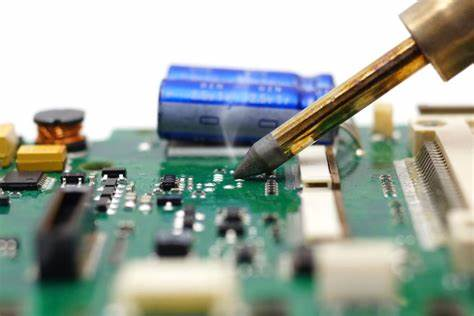Soldering is a fundamental skill for anyone working with electronics, and understanding the process is essential for creating reliable connections on a circuit board. In this article, we'll explore the different types of solder, the tools needed, and the techniques for making perfect solder joints.

Lead-based solder has been the industry standard for many years. It typically consists of a mixture of tin and lead, with a common ratio being 60/40 (60% tin and 40% lead). This type of solder has a relatively low melting point, making it easy to work with.
Due to health and environmental concerns, lead-free solder is becoming more popular. Lead-free solder is made from a combination of metals such as tin, silver, and copper. While it has a higher melting point compared to lead-based solder, it is a safer alternative.
Rosin core solder contains a flux core that helps clean the metal surfaces and improve the flow of the solder. This type is commonly used for electronic soldering because it creates strong and reliable solder joints.
A soldering iron is the primary tool used for melting the solder. Soldering irons come in various wattages, with adjustable temperature controls being a preferred feature. The soldering iron tip should be clean and well-maintained for optimal performance.
A soldering stand is essential for safely holding the soldering iron when not in use. It prevents accidental burns and keeps the work area organized.
Soldering can produce harmful fumes, especially when using lead-based solder. A fume extractor helps remove these fumes, creating a safer working environment.
Solder Wires: Available in different diameters, solder wires are the material used to create the solder joints.
Soldering Iron Tip Cleaner: Keeps the soldering iron tip clean and free from oxidation.
Tweezers and Pliers: Useful for handling small components and bending the leads.
Solder Wick and Desoldering Pump: Tools for removing excess solder or correcting mistakes.
Before soldering, it's essential to prepare the components and the circuit board. This involves cleaning the surfaces to remove any dirt or oxidation. Bending the leads of through-hole components can help secure them in place on the board.
To create a strong solder joint, follow these steps:
Heat the Joint: Place the soldering iron tip against both the component lead and the pad on the circuit board. This ensures both surfaces reach the melting point of the solder.
Apply Solder: Once the joint is hot enough, touch the tip of the solder wire to the joint. The solder should flow smoothly around the lead and pad.
Remove the Iron: After applying the right amount of solder, remove the soldering iron and let the solder cool naturally. Avoid moving the joint while the solder cools to prevent a weak connection.
Surface mounted components require precision and care. Use small amounts of solder and a fine-tipped soldering iron for these delicate parts. A steady hand and patience are key to avoiding damage to the components or the circuit board.
Use the Right Amount of Solder: Too much solder can create bridges between connections, while too little can result in weak joints.
Maintain the Soldering Iron Tip: Regularly clean the tip and use a tip cleaner to remove oxidation.
Work in a Well-Ventilated Area: Use a fume extractor to minimize exposure to harmful fumes.
Practice Makes Perfect: Soldering is a skill that improves with practice. Start with simple projects and gradually move to more complex ones.
Lead-free solder is recommended for its safety and environmental benefits. However, lead-based solder is easier to work with due to its lower melting point.
Ensure the joint is clean and both surfaces are heated properly before applying solder. Avoid moving the joint while the solder cools.
A fume extractor removes harmful fumes produced during soldering, creating a safer working environment.
Use a soldering iron tip cleaner or a damp sponge to remove oxidation and keep the tip in good condition.
Yes, but it's essential to choose the right diameter of solder wire and apply the correct amount for different components.
Rosin core solder contains flux that helps clean the surfaces and improve the flow of the solder, making it ideal for electronic applications.
By following these guidelines and understanding the tools and techniques involved, you can master the art of soldering and create reliable, high-quality connections on your circuit boards. Happy soldering!